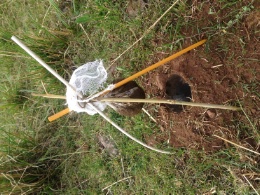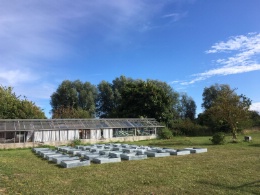The Dung Beetle Project ... as just started
June 2016
Researchers: Irene Piccini, Beatrice Nervo and Tomas Roslin, in collaboration with Mattias Forshage, Claudia Palestrini and Antonio Rolando
Why Dung Beetles? Did you know that there are approximately as many beetle species living in the droppings of other animals as there are bird species – globally? Not only are these beetles diverse, but they are also involved in a massive number of ecosystem functions ranging from the recycling of nutrients to the release of greenhouse gases from cow pats.
Quite disturbing is then the fact that many of these beetles are currently declining and/or threatened. Of a national total of 80 species in Sweden, 23 are currently regarded as threatened and 12 are believed to be regionally extinct. The question is whether having less dung beetle species will also make the pasture ecosystem work less efficiently. In particular, we are interested in whether the very same species which are particularly sensitive to disturbance may also be especially important to ecosystem function. Such a link between functional traits and response traits has been widely assumed in recent ecological theory, but not so widely tested.
In this project, we try to relate recent population decline among Fennoscandian dung beetles to their functional role. We aim to breed a good range of dung beetle species at the station (including both common and declining species), and to explore their contribution to multiple ecosystem functions. By relating their functional efficiency to their recent population trends, we test the idea of an association between functional and response traits.
Why Station Linné? If you want to work on interesting dung beetle species, then Öland is THE place to go. Of species declining or even disappearing from other regions, several are still occurring on island – and some are even doing fairly well here. Thus, the Station offers the ideal base for studying the biodiversity of Swedish dung beetles, and the ecosystem functions which they provide. The station offers short distances to good collecting sites, and excellent logistics for odd work under nice conditions. Most importantly, Öland is home to a nice community of farmers with a strong role in sustaining dung beetle diversity. Utlimately, it is they and their cattle who sustain diverse pasture habitats and a rich dung beetle fauna.

Figure 1: To collect dung beetles for rearing, we use a special trap design: a juicy bait of cow dung suspended over a modified soda bottle. Beetles attracted by the scent are collected alive for rearings.

Figure 2: All set for breeding. Dung beetles collected in the island are reared in quadratic cages of 1m2 each.